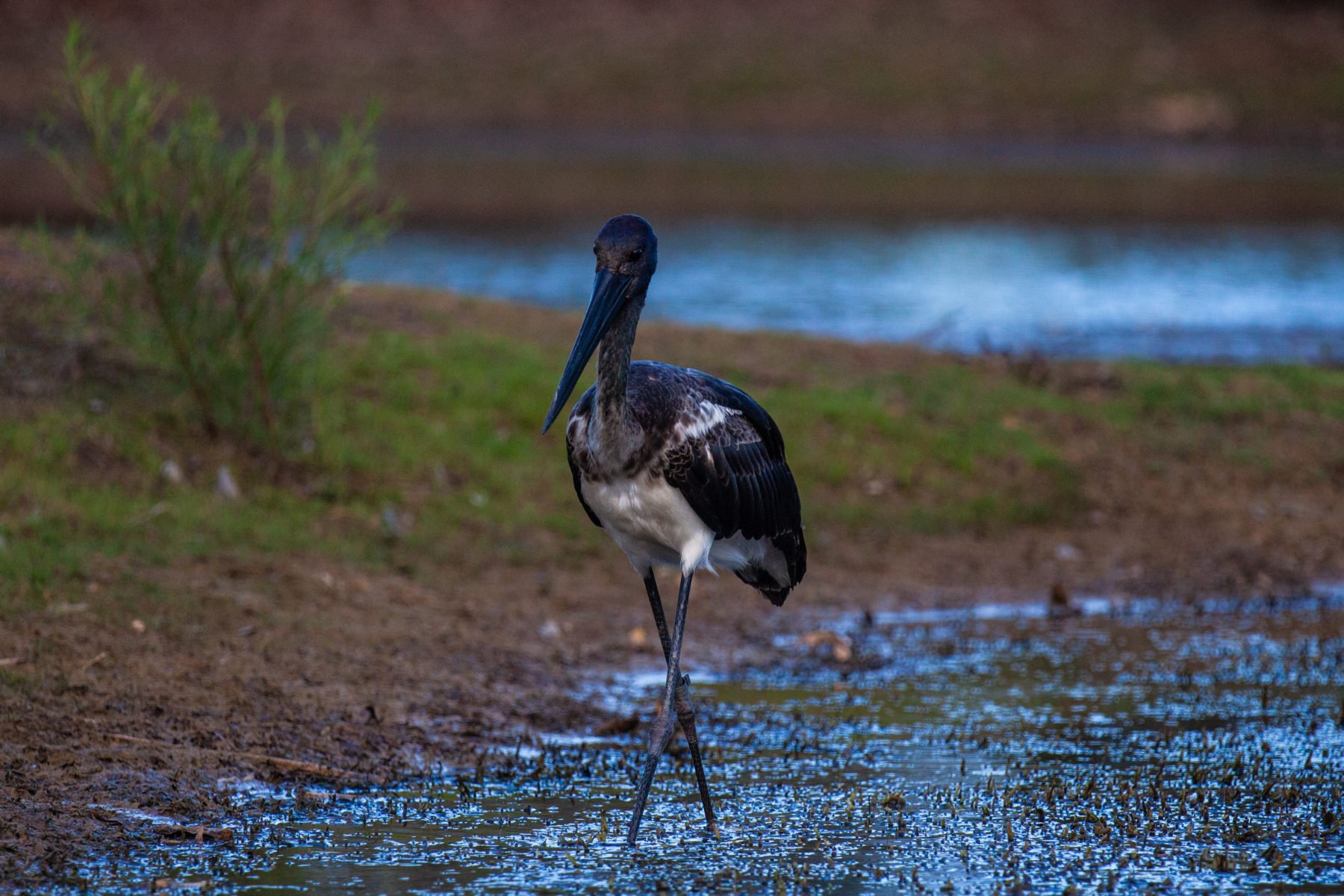When Sally met Fred the black-necked stork
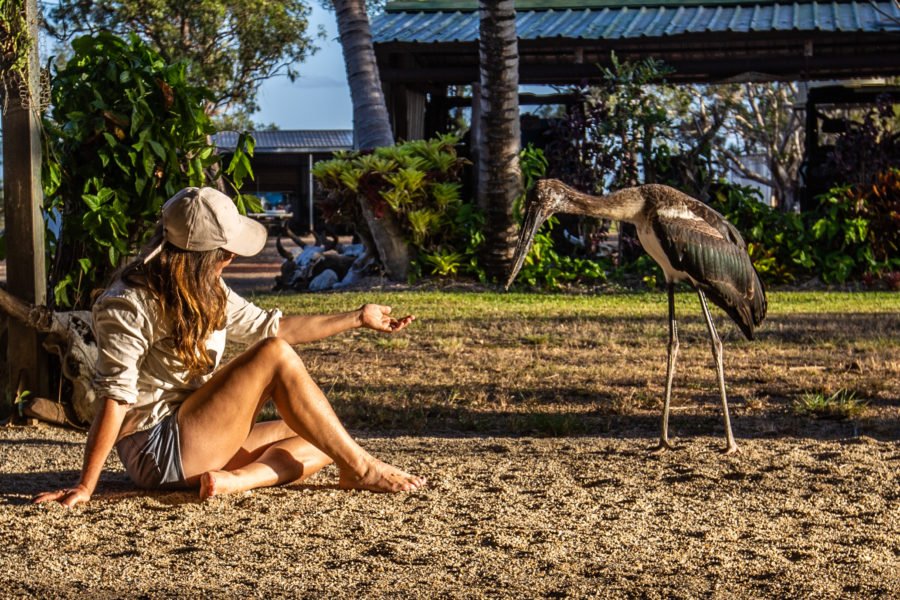
“Oh, he’s totally adorable! We’re completely in love with him,” Sally Gray says of the bird she calls Fred. At 1.3m tall, with a 2m wingspan, he lopes like an awkward teenager around the Far North Queensland homestead where she lives with her partner Graham Woods. Fred has, Sally agrees, helped the couple retain their sanity and sense of humour during 14 months of severe isolation brought on by COVID travel restrictions between the monsoonal rains of two wet seasons.
The juvenile black-necked stork first came into their lives last September. He’d been found about five weeks earlier – crumpled and broken after a suspected collision with a car – by a roadside in western Cape York Peninsula near the town of Mapoon.
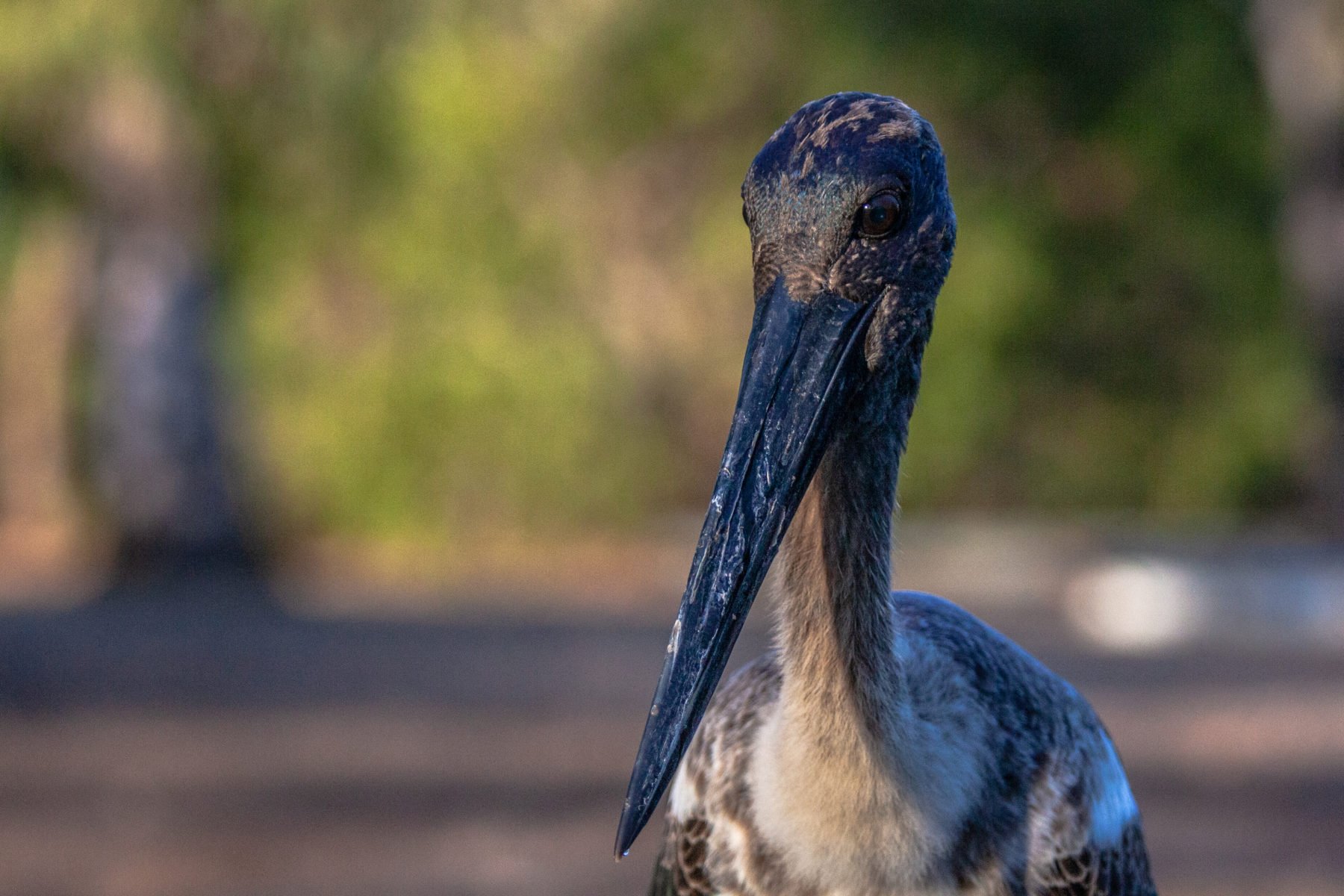
Carers at Weipa Wildlife Care took him in and rehabilitated him. And when he was strong enough, they took him to be returned to the wild on Piccaninny Plains, in the heart of Cape York. The property, which has been managed for the past eight years by Sally and Graham, is 165,000ha of woodlands, wetlands and grasslands, jointly owned by the Australian Wildlife Conservancy and The Tony and Lisette Lewis Foundation.
Fred belongs to the only species of stork in Australia and Sally had seen birds like him on the property before. Colloquially they’re often known as jabirus.
“They are normally solitary or in pairs and, in our experience, are usually very timid,” Sally says. “You usually can’t approach them at all: get within a couple of hundred metres and they’ll take off.”
When the Weipa wildlife carers drove him to the dam on Piccaninny Plains for release late last August, it was the first time Sally and Graham had seen him.
“He flew away and we thought that was it,” Sally recalls. “We spotted him about 5km away the next day and thought he was doing well. Then he turned up near our homestead a few days later and I was a little concerned because he wasn’t anywhere near water and I didn’t know whether he’d been able to feed himself.” Black-necked storks are fish eaters. The next morning, he was in the same spot and on the third morning he followed Sally home.
“I was walking my dogs, and he just toddled along behind us and now that’s what he does all the time – it’s a bit like Storm Boy,” Sally says, recalling the famed Australian story about a pelican who developed a close relationship with a boy who saved him. “He seems to know his name and, for an animal with such a small head, he seems very smart.
“He’s definitely not silly, and he’s got very intelligent eyes. He spends his days observing and learning. He explores, tests things out, has a really good look at and a play with everything.”
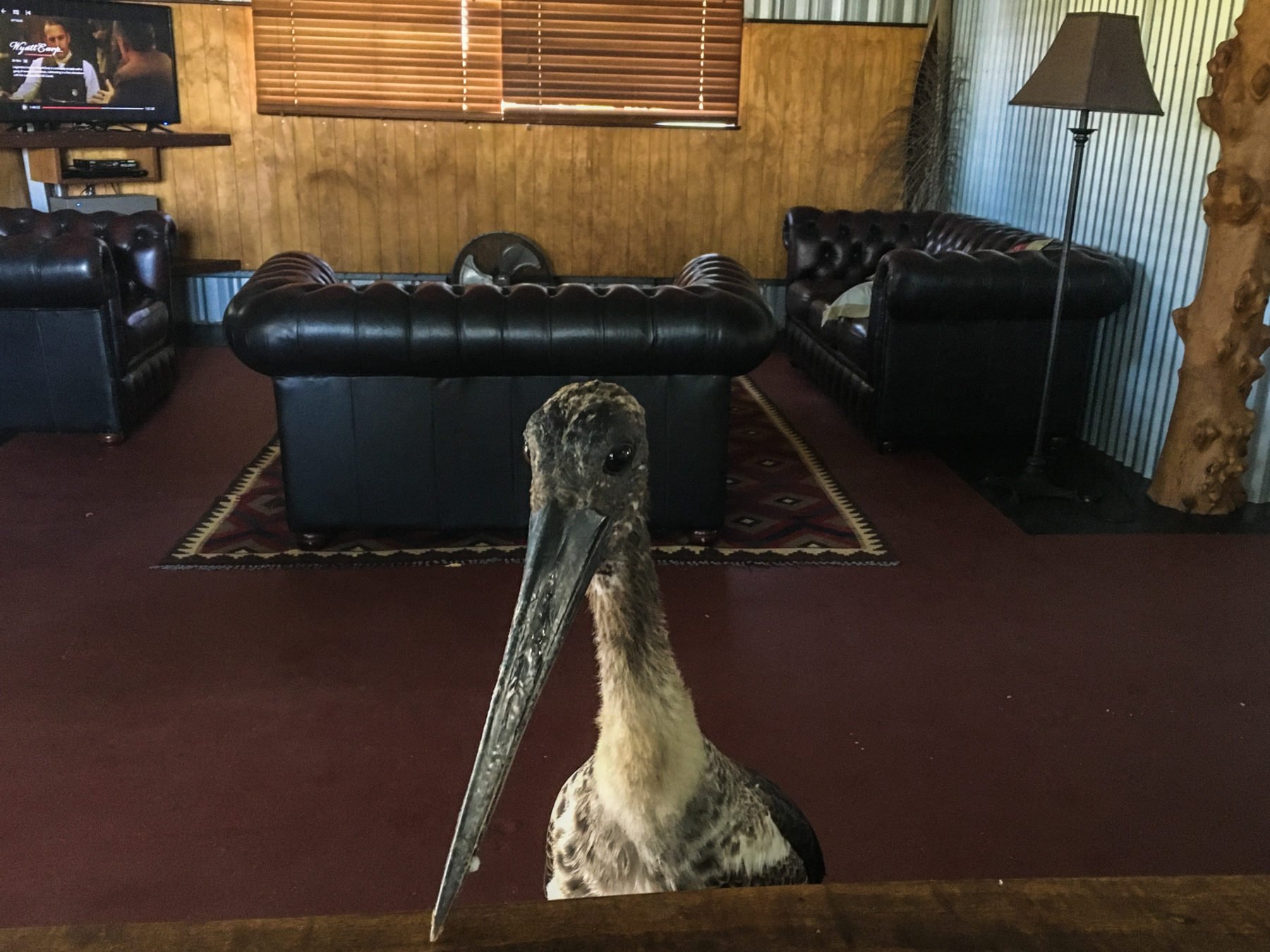
Fred was thought – due to the amount of soft down still on his neck and head – to have been just 12 months old when he came into Sally’s life. The species is thought to have a life expectancy of at least 30 years.
So, it’s not surprising that like any young animal with a long lifespan he’s been spending his early life exploring his world. “He has sword fights with the plants with his long bill. When we have meat hanging, he has a poke and a play with that,” Sally says. “He’s like a puppy. He picks up pens, socks disappear, and we find them in the garden, and he’ll pick up the phones and wander outside with them.
“So, he’s intelligent, he’s exploring and learning about his world and, at some point, when he thinks he’s ready, I expect he’ll take off for good.”
In the meantime, he genuinely seems to like hanging out with Sally, Graham and their dogs, entering their home when he feels like it and poking around, particularly in the kitchen. Sally knows when he’s been in because he leaves a lot of what seems to be dribble all over the place. “But he’s never pooed in the house!” Sally says. “He seems to have trained himself. When he wants to go, he takes himself out, relieves himself on the lawn and then comes back in.”
For a long time, Fred didn’t make any noise at all and some authorities on the species suggest it isn’t particularly vocal.
“Then he started doing this kind of canary whistling thing. It was very, very soft at first but then it’s like he found his voice and he’s got louder and louder,” Sally says. Now he’s very vocal and sometimes it seems as if he’s trying to communicate with Sally and Graham. “We’re not sure what that’s about. We’ve read that it’s the sound they will make to their parents, but most information says they don’t make a sound at all.”
Despite how it seems, Sally’s petty sure Fred knows he’s a bird because, as well as hanging out with his human and canine friends, he been trying to enthusiastically make friends with other feathered creatures.
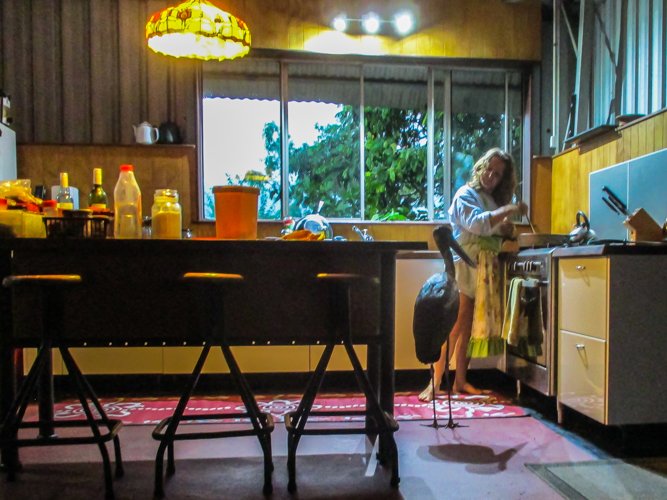
“There’s no other black-necked storks around so he tries to hang out with the flocks of galahs, although they don’t seem so impressed!” Sally says. “And he’s tried to also hang out with cockatoos, and they’re not impressed either. But then he also spends time with the ibis and the brolgas [which, like him are tall water birds] and he’s learnt some brolga dances and tries to do those.”
Sally knows he’ll leave when he’s ready. “One day,” she says. “I know he’ll just fly off and won’t come back.” And that, she agrees is the way it should be.
